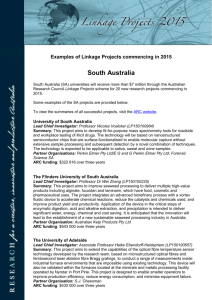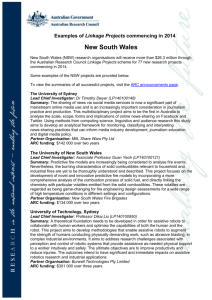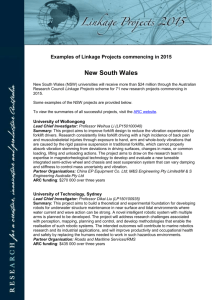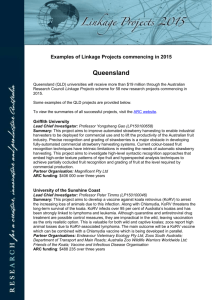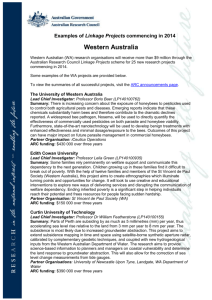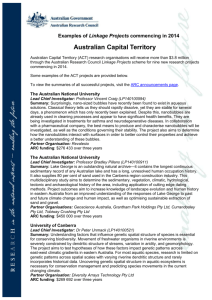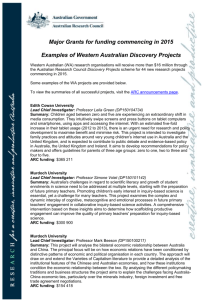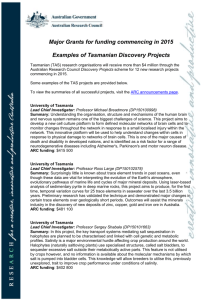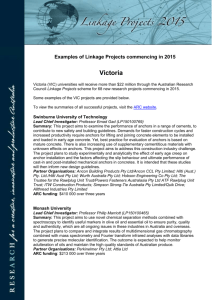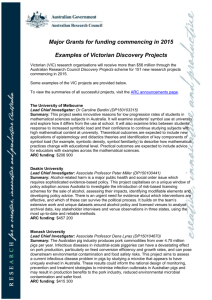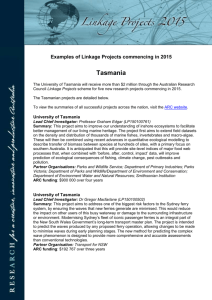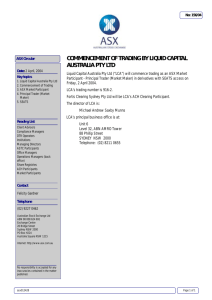Word Format - Australian Research Council
advertisement
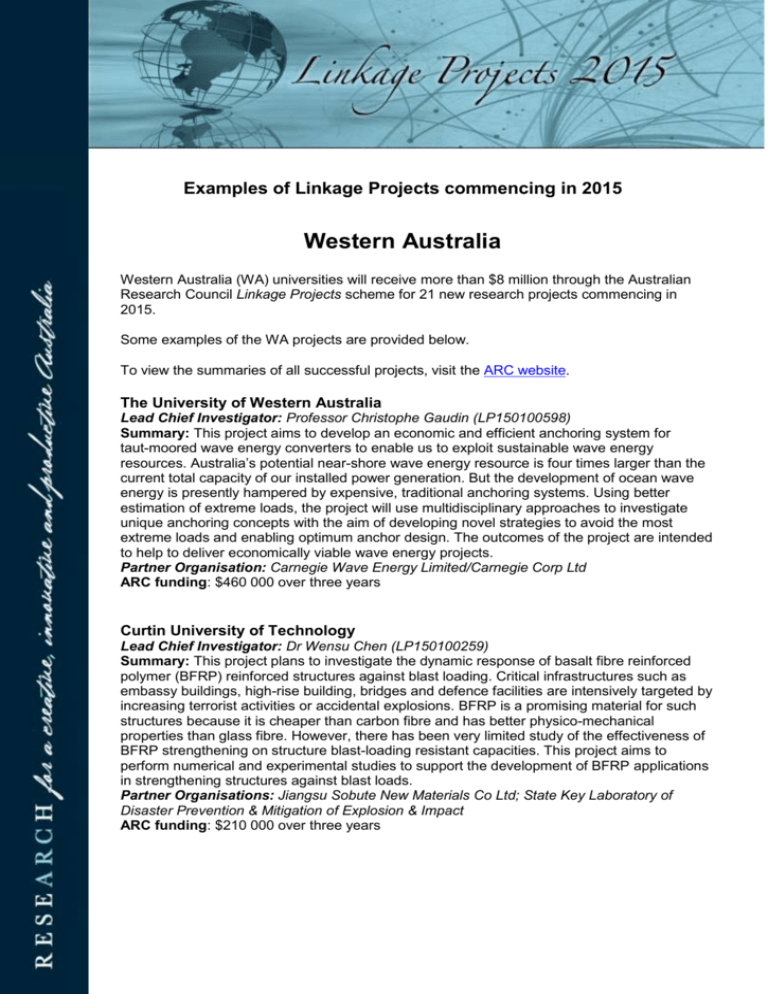
Examples of Linkage Projects commencing in 2015 Western Australia Western Australia (WA) universities will receive more than $8 million through the Australian Research Council Linkage Projects scheme for 21 new research projects commencing in 2015. Some examples of the WA projects are provided below. To view the summaries of all successful projects, visit the ARC website. The University of Western Australia Lead Chief Investigator: Professor Christophe Gaudin (LP150100598) Summary: This project aims to develop an economic and efficient anchoring system for taut-moored wave energy converters to enable us to exploit sustainable wave energy resources. Australia’s potential near-shore wave energy resource is four times larger than the current total capacity of our installed power generation. But the development of ocean wave energy is presently hampered by expensive, traditional anchoring systems. Using better estimation of extreme loads, the project will use multidisciplinary approaches to investigate unique anchoring concepts with the aim of developing novel strategies to avoid the most extreme loads and enabling optimum anchor design. The outcomes of the project are intended to help to deliver economically viable wave energy projects. Partner Organisation: Carnegie Wave Energy Limited/Carnegie Corp Ltd ARC funding: $460 000 over three years Curtin University of Technology Lead Chief Investigator: Dr Wensu Chen (LP150100259) Summary: This project plans to investigate the dynamic response of basalt fibre reinforced polymer (BFRP) reinforced structures against blast loading. Critical infrastructures such as embassy buildings, high-rise building, bridges and defence facilities are intensively targeted by increasing terrorist activities or accidental explosions. BFRP is a promising material for such structures because it is cheaper than carbon fibre and has better physico-mechanical properties than glass fibre. However, there has been very limited study of the effectiveness of BFRP strengthening on structure blast-loading resistant capacities. This project aims to perform numerical and experimental studies to support the development of BFRP applications in strengthening structures against blast loads. Partner Organisations: Jiangsu Sobute New Materials Co Ltd; State Key Laboratory of Disaster Prevention & Mitigation of Explosion & Impact ARC funding: $210 000 over three years The University of Western Australia Lead Chief Investigator: Professor Peter Veth (LP150100490) Summary: This project aims to examine the role that art has played in managing social and environmental change over the past 50 000 years. The project seeks to carry out the first systematic comparative analysis of different rock art repertoires and associated archaeology from the Kimberley and Arnhem Land. It is intended that identifying continuities and changes in this archaeological signature will provide direct evidence of how people adapted and signalled their identity. Intended outcomes are new understanding to contribute to interregional rock art studies and inform Indigenous and government heritage management practices. Partner Organisations: Kimberley Foundation Australia; Department of Parks and Wildlife/Department of Environment and Conservation; Dunkeld Pastoral Co. Pty. Ltd./Dunkeld Pastoral Co Pty Ltd ARC funding: $865 905 over five years Curtin University of Technology Lead Chief Investigator: Professor Kliti Grice (LP150100341) Summary: The project aims to reduce the costs of drilling in deep-water offshore by better identifying potential drilling sites. The North-West shelf offshore Australia is the main supplier of liquefied natural gas. However, there is uncertainty about the age of petroleum (oil and gas) discovered in the region. It is not currently possible to constrain an age of fluids to a number of source rocks. The aims are to develop a high-level age discriminative tool for fluids. An interdisciplinary approach will be applied using state-of-the-art techniques including comprehensive two dimensional gas chromatography time-of-flight mass spectrometry, compound specific isotope analysis of hydrocarbons, clumped isotopes of methane and metagenomics. Partner Organisation: Woodside Petroleum Ltd. ARC funding: $455 000 over three years Murdoch University Lead Chief Investigator: Professor John Howieson (LP150100848) Summary: This project aims to develop nitrogen-fixing legumes adapted to the changing climate. Nitrogen fixation from legumes is worth $3 billion to the Australian agricultural economy, but changing rainfall patterns threaten much of this. One solution is to transition pasture growth to a reliance on perennial plants, which are less affected by unseasonal rain. Lebeckia ambigua is an outstanding perennial legume to begin this change, but its nitrogen fixation is compromised by nodulation failure caused by death of its symbiotic rhizobia. This project intends to improve the survival in acid and infertile soils of the unique rhizobial symbionts the research team has discovered for Lebeckia ambigua in South Africa. Partner Organisations: University of Cape Town; Department of Agriculture & Food; Global Pasture Consultants Pty Ltd; Alosca Technologies Pty Ltd ARC funding: $335 834 over three years
